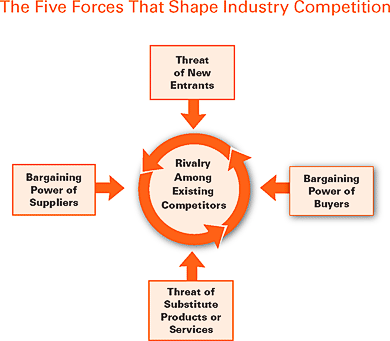T-Mobile, a name synonymous with shaking things up in the wireless industry, has carved a unique path for itself in the United States. Owned by the telecommunications behemoth Deutsche Telekom, T-Mobile boasts a loyal and ever-expanding customer base, solidifying its position as the third-largest wireless carrier in the country. But T-Mobile’s story transcends mere numbers. They’ve established themselves as the “Un-carrier,” a company that consistently challenges the established players by offering innovative plans, prioritizing customer satisfaction, and injecting a healthy dose of fun into an often-staid industry.
This deep dive into the T-Mobile experience delves into the company’s rich history, explores the vast reach of its network, and unpacks the factors that differentiate it in the fiercely competitive world of wireless carriers.
T-Mobile’s roots can be traced back to 1994 with the establishment of VoiceStream Wireless. After spinning off from its parent company in 1999, VoiceStream was acquired by Deutsche Telekom in 2001 and subsequently rebranded as T-Mobile USA in 2002. Through a series of strategic mergers, most notably with MetroPCS in 2013, T-Mobile has grown into a force to be reckoned with.
The year 2013 marked a turning point for T-Mobile. With the arrival of John Legere as CEO, the company embarked on a bold new strategy – becoming the “Un-carrier.” This moniker embodied a commitment to shaking up the industry by eliminating restrictive contracts, hidden fees, and limited data plans that plagued the market. T-Mobile introduced a wave of customer-centric plans, including unlimited data options and abolishing roaming charges, forever changing the landscape of wireless service.
T-Mobile doesn’t shy away from pushing boundaries. They’ve been at the forefront of deploying the latest technologies, including being the first major carrier to boast a nationwide 5G network. This commitment to innovation ensures their customers have access to the fastest and most reliable wireless service available.
Beyond Connectivity: Building a Community:
T-Mobile understands that customer service goes beyond just providing a signal. They’ve cultivated a vibrant community around their brand, fostering a sense of belonging among their subscribers. Their marketing campaigns are known for their quirky humor and focus on real people, further solidifying their reputation as a carrier that truly gets its customers.
As T-Mobile continues to grow and innovate, one thing remains certain: they will stay true to their disruptive spirit. With a loyal customer base, a cutting-edge network, and a commitment to putting customers first, T-Mobile is poised to remain a major player in the ever-evolving world of wireless communication.
Target Audience of T-Mobile
T-Mobile casts a wide net to capture a large portion of the mobile service market, but their marketing strategy leans heavily towards a specific demographic. Millennials are a core target audience for T-Mobile. This generation, roughly between the ages of 26 and 41 in 2024, is known for being tech-savvy and budget conscious. T-Mobile appeals to these qualities with their energetic branding, focus on data plans, and competitive pricing. They even leverage popular culture references and social media trends to connect with this younger demographic.
However, it’s important to note that T-Mobile doesn’t exclusively target millennials. Their focus on value and strong network coverage also attracts budget-minded consumers of all ages, as well as families looking for affordable plans for multiple lines.
Marketing Strategies of T-Mobile
T-Mobile has employed various marketing strategies over the years to differentiate itself in a highly competitive industry. Here are some of the key elements of T-Mobile’s marketing strategies:
Un-carrier Movement
T-Mobile’s Un-carrier Movement is a brilliant marketing strategy launched in 2013. Its core purpose is to disrupt the mobile service industry by offering customer-centric benefits that directly challenge the practices of major competitors. This strategy has been highly successful in attracting new customers to T-Mobile.
The Un-carrier Movement revolves around initiatives that break away from the norm. The campaign includes:
- New plan structure: A new, streamlined plan structure for new customers that eliminates contracts, subsidized phones, coverage fees for data, and early termination fees
- Contract-free pricing: A new contract-free pricing structure with simpler plans, where a phone’s cost is paid over a two-year financing plan
- Customer service: T-Mobile provides personalized support from experts
- Live Nation partnership: T-Mobile customers can get $25 tickets to live shows and last-minute tickets to sold-out sections
- Netflix: T-Mobile’s family plans include Netflix at no extra charge
The results speak for themselves. By prioritizing customer needs and satisfaction, T-Mobile has significantly increased its customer base, tripling the number of new subscribers they attract from competitors. The Un-carrier Movement has not only transformed T-Mobile’s brand image, but it’s also forced other carriers to re-evaluate their own practices to stay competitive.
Branding and Messaging
T-Mobile’s branding and messaging strategy revolves around putting the customer first. Their core values, like prioritizing the customer experience and achieving bold results, all point towards this central focus. This commitment is evident in their marketing strategy, which centers on understanding customer pain points and taking action to address them.
The “Un-carrier” movement exemplifies T-Mobile’s customer-centric approach. By identifying common frustrations with long contracts, early termination fees, and confusing pricing structures, they created a clear distinction from competitors. They introduced “must-have” features for customers, including simpler plans, quicker phone upgrades, and cheaper rates. This approach made T-Mobile a more attractive option for many mobile service users. Their messaging directly targets the pain points of customers with other carriers, highlighting the benefits of switching to T-Mobile’s fairer, more transparent service.
T-Mobile’s branding reinforces this message. Their cool color palette and energetic logo represent a youthful and approachable brand. Their advertising directly addresses customer frustrations with competitor practices, showcasing how T-Mobile eliminates those issues with simpler contracts and more affordable plans. This consistent messaging across branding and marketing channels has played a key role in their success.
By eliminating the industry-standard 2-year contracts, T-Mobile attracted a significant number of customers from their competitors. Their branding, messaging, and Un-carrier initiatives work together to position T-Mobile as the customer-friendly alternative in the wireless service market. This strategy has demonstrably increased customer satisfaction and brand loyalty.
Innovative Products and Services
T-Mobile isn’t just shaking things up with their marketing; they’re also shaking things up with innovative products and services. This strategy keeps them at the forefront of the industry and gives them a distinct edge over competitors. They offer a variety of solutions beyond just standard mobile phone service, catering to the evolving needs of both consumers and businesses.
Let’s take a look at some of their most innovative offerings. T-Mobile boasts the largest and fastest 5G network in the US, providing customers with blazing-fast speeds and wider coverage. For businesses, they have T-Mobile Business Internet, a 5G fixed wireless solution that offers enhanced security, flexibility, and speed. They even have solutions for the Internet of Things (T IoT) and AI-powered cloud communication platforms (Collaborate).
But T-Mobile’s innovation goes beyond just connectivity. They’ve introduced Halo.Car, a driverless and all-electric carshare service, and T-Mobile MONEY, an online bank account with industry-leading interest rates and no hidden fees. These unexpected offerings demonstrate their commitment to staying ahead of the curve and providing customers with a wider range of valuable services. By constantly innovating, T-Mobile positions itself as a forward-thinking leader in the telecommunications industry.
Sponsorships and Partnerships
Strategic sponsorships and partnerships are another key element of T-Mobile’s marketing strategy. These alliances allow them to expand their reach, build brand awareness, and connect with new customer segments. Here are some examples of how T-Mobile leverages sponsorships and partnerships.
First, they target specific demographics through high-profile sponsorships. Their partnership with the PGA of America, for instance, allows them to connect with golf fans, a large and affluent demographic. This strategic partnership positions T-Mobile’s 5G technology as an essential tool for enhancing the PGA experience.
Partnerships also play a key role in T-Mobile’s B2B strategy. Their Partner Programs offer a variety of benefits to businesses, including access to the latest communication technologies, marketing support, and lead generation opportunities. These programs incentivize companies to partner with T-Mobile, expanding their reach and strengthening their overall business offerings.
Beyond industry-specific partnerships, T-Mobile also demonstrates a commitment to social responsibility through community involvement. Their support for over 8,000 non-profit and community organizations showcases their values and broadens their positive brand image. By strategically partnering with a variety of organizations, T-Mobile positions itself as a well-rounded company that cares about its customers, its partners, and the communities it serves.
Targeted Advertising
T-Mobile leverages targeted advertising to reach potential customers with relevant messages. Unlike traditional methods that rely on personal information, they focus on Mobile Advertising IDs (MAIDs). These unique identifiers for your device, combined with browsing habits and inferred interests, create anonymous user profiles. This emphasis on privacy allows T-Mobile to target specific demographics without compromising user data.
So, how does this work in practice? Imagine an advertiser wants to reach “sports enthusiasts.” T-Mobile can create an audience segment based on factors like downloaded sports apps or visited sports websites. This segment would be linked to MAIDs, and users with those IDs would then see ads for sports-related products or services. T-Mobile acts as a bridge, connecting advertisers with relevant audiences while protecting user privacy.
Beyond MAIDs, T-Mobile also uses cookies to track browsing behavior. By analyzing how users interact with websites and apps, they can build a more comprehensive picture of interests. This allows them to serve highly targeted ads based on a user’s online activity. For example, someone who frequently visits car comparison websites might see ads for auto dealerships or financing options.
In conclusion, T-Mobile’s targeted advertising strategy prioritizes both user privacy and campaign effectiveness. By utilizing MAIDs and anonymous browsing data, they deliver relevant ads to potential customers while maintaining user trust.
Overall, T-Mobile’s marketing strategies are characterized by a customer-centric approach, disruptive tactics, and a focus on innovation and differentiation. By consistently challenging industry norms, investing in customer experience, and leveraging strategic partnerships, T-Mobile aims to maintain its position as a leading wireless carrier in the competitive telecommunications market.
Marketing Mix of T-Mobile
T-Mobile has established itself as a major player in the telecommunications industry through a strategic marketing mix that prioritizes customer needs and innovation. Let’s delve into each of the 4Ps and explore how T-Mobile uses them to stand out:
1. Product
Core Product: Reliable and high-speed mobile phone service, including talk, text, and data plans.
Value-Added Services: T-Mobile goes beyond basic service by offering a variety of features that add value for customers, such as:
-
- Un throttled Data: Data speeds remain consistent even during peak usage times.
- International Calling and Roaming: Features like free texting to Mexico and Canada and discounted international roaming packages.
- Entertainment Bundles: Free or discounted subscriptions to streaming services like Netflix or Hulu with select plans.
- 5G Network: Access to the largest and fastest 5G network in the United States (according to T-Mobile).
- Innovative Solutions: Services like T-Mobile Business Internet, T IoT for enterprise internet of things connectivity, and Collaboration for AI-powered cloud communication.
- Unexpected Offerings: Halo.Car, a driverless carsharing service, and T-Mobile MONEY, an online bank account, demonstrate their commitment to offering a wider range of valuable services.
Product Differentiation: T-Mobile positions itself as the “Un-carrier” by breaking away from industry norms. This includes eliminating restrictive contracts, offering transparent pricing structures, and providing customer-centric features like free upgrades and simpler plans.
Product Life Cycle Management: T-Mobile actively introduces new products and services like 5G and Halo.Car to cater to evolving customer needs. They also adapt existing products, such as offering tiered data plans to cater to different usage levels.
2. Price
Pricing Strategy: T-Mobile focuses on competitive pricing with a variety of plans to suit different budgets and data usage needs. They frequently offer promotions and discounts to attract new customers.
Value Pricing: While not always the cheapest option, T-Mobile emphasizes the value they provide for the price, including benefits like unlimited data, free extras, and access to their expansive 5G network.
Payment Options: T-Mobile offers flexible payment options, including device financing plans and postpaid billing options.
3. Place
Distribution Channels: T-Metro stores are the primary channel for T-Mobile sales and customer service. They also have authorized retailers and online sales channels to reach a wider audience.
Selective Distribution: T-Mobile partners with specific retailers who align with their brand image and can effectively promote their products and services.
Accessibility: T-Mobile strives to make their services accessible through a variety of channels and by offering a wide range of plans to cater to different budgets and needs.
4. Promotion
Integrated Marketing Communications (IMC): T-Magenta branding, a youthful and energetic approach, and consistent messaging across all marketing channels help T-Mobile create a strong brand identity.
Advertising: T-Mobile utilizes targeted advertising through various channels like television, social media, and online platforms. Their ads often feature humor and address customer pain points with competitor services, highlighting the benefits of switching to T-Mobile.
Public Relations (PR): T-Mobile leverages sponsorships with organizations like the PGA of America and partnerships with major tech companies to gain positive media coverage and brand recognition.
Social Media Marketing: They have a strong presence on social media platforms, engaging with customers directly, promoting their services, and fostering a sense of community.
Experiential Marketing: T-Mobile utilizes events, contests, and interactive experiences to connect with potential customers on a personal level and showcase their brand personality.
By strategically utilizing these 4Ps, T-Mobile has carved out a unique space in the telecommunications industry. Their focus on customer needs, innovative products and services, competitive pricing, and targeted marketing has helped them attract and retain a loyal customer base. Their “Un-carrier” approach continues to disrupt the market and force competitors to re-evaluate their own strategies.
Porter’s Five Forces Analysis of T-Mobile
Understanding the competitive landscape is crucial for any business strategy. Here’s a breakdown of Porter’s Five Forces to analyze the competitive environment T-Mobile faces:

1. Threat of New Entrants (Moderate)
Barriers to Entry: The wireless network infrastructure requires significant capital investment, spectrum licenses, and established customer bases. These factors pose a barrier for entirely new entrants. However, Mobile Virtual Network Operators (MVNOs) who piggyback on existing networks can enter the market with lower costs.
2. Bargaining Power of Suppliers (Moderate)
Key Suppliers: Equipment manufacturers (e.g., Samsung, Apple) and network infrastructure providers are the main suppliers. While these companies have some power, T-Mobile’s large size and purchasing power give them leverage in negotiations.
3. Bargaining Power of Buyers (High)
Customer Concentration: The mobile service market has a high concentration of buyers, with many individual consumers and businesses. This gives customers significant bargaining power, as they can easily switch providers for better deals.
Price Sensitivity: Customers are highly price-sensitive, with many comparing plans and switching providers based on cost.
Availability of Substitutes: Landline phone services, VOIP solutions, and even satellite internet can act as substitutes for some customers, increasing their bargaining power.
4. Threat of Substitutes (Moderate)
Technological Advancements: Emerging technologies like satellite internet or advancements in fixed wireless internet could pose a threat in the future, offering alternatives to traditional mobile service.
Limited Functionality: Substitute solutions may not offer the same level of mobility and convenience as traditional mobile phone service.
5. Competitive Rivalry (High)
Market Concentration: The wireless service industry is highly concentrated, with a few major players like AT&T, Verizon, and T-Mobile controlling a large market share. This intense competition leads to price wars, promotional offers, and constant innovation to attract customers.
Product Differentiation: While some differentiation exists with network coverage and features, core services like voice and data are largely similar across providers. Price becomes a key battleground in this competitive landscape.
Customer Switching Costs: While decreasing due to easier unlocking processes and plan flexibility, switching providers can still involve some inconvenience and cost (e.g., early termination fees), creating a barrier to customer churn, but not a significant one.
Overall, the competitive landscape for T-Mobile presents both challenges and opportunities. The high bargaining power of buyers and threat of substitutes require T-Mobile to focus on value pricing, innovative features like 5G, and bundling services to stand out. The moderate threat of new entrants and supplier power allows them to focus their efforts on competing directly with established rivals.
T-Mobile’s success hinges on their ability to leverage their “Un-carrier” strategy to differentiate themselves. By prioritizing customer needs, offering transparent pricing, and constantly innovating, they can continue to win over customers and gain market share in this competitive environment.
Also Read: Transforming Teleco: The Story of Deutsche Telekom Digital Revolution
To read more content like this, subscribe to our newsletter



